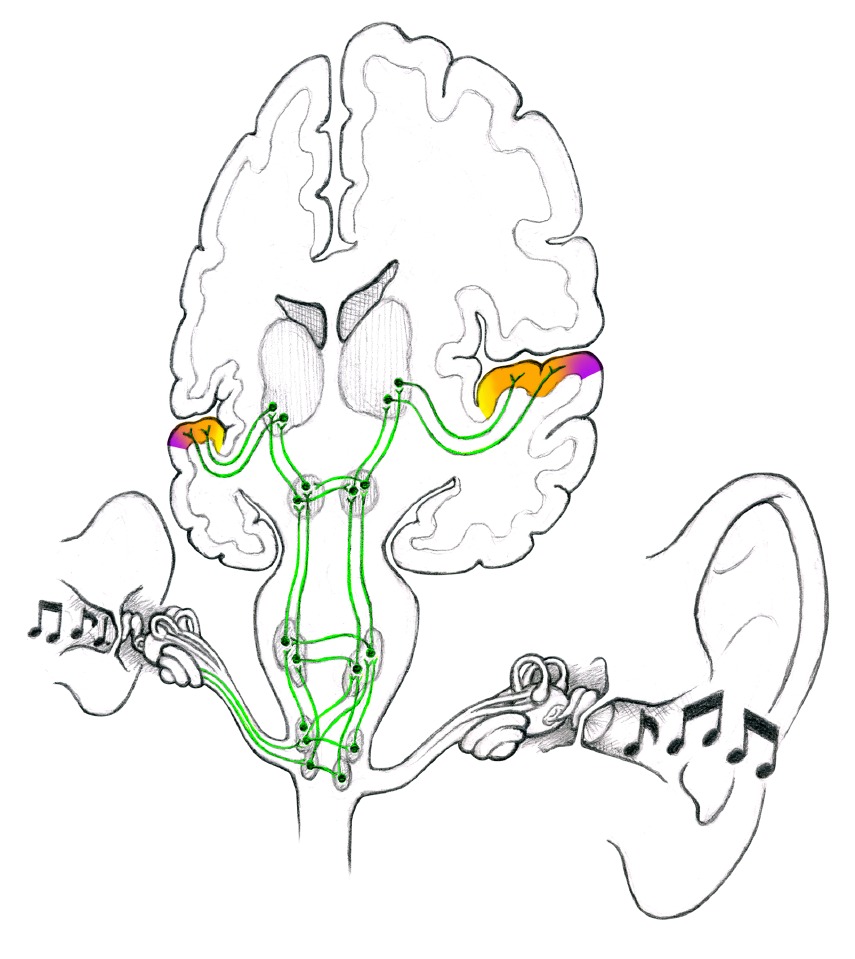Module Overview
In this module, the temporal lobe memory system is introduced. This module begins by a classic lesion study that demonstrated the role of the hippocampus in memory formation. The case study of HM, a man whose left and right hippocampi were surgically removed is reviewed. The distinction between declarative and non-declarative memory is demonstrated with HMs ability to learn mirror tracing (a non-declarative skill-based memory), but not declarative facts or episodes. This lesion study also highlights the role of the hippocampus and associated areas in the medial temporal cortex as a declarative memory system.
Introduction
Traditionally, memory has been taught using a “boxes in the mind” approach where there are boxes for encoding, storage, and retrieval, with little reference to the brain structures involved. However in recent decades the evidence for a medial temporal lobe memory system has become overwhelming along with the fact that this memory system is shared with other mammals to some extent and with other primates in particular. By linking properties of human memory to physical primate memory structures students will come to understand that properties of memory are determined by the underlying physical structures and their connectivities.
The medial temporal lobe memory system is a good example of a very specialized brain module. The case of HM shows that it is a dedicated module with functions that cannot be subsumed or taken over by other parts of the brain. Students tend to learn about the outside of the brain but don’t have a good grasp of hidden regions such as medial cortical areas. Structurally, studying the medial temporal lobe memory system requires students to understand the intimate relationship between the hippocampus and the proximal regions of the media temporal cortex.
Discussion of the hippocampus and its role in memory formation provides a good opportunity to introduce a simple neural net model. In this case, memory formation can be illustrated by a simple network in the hippocampus, contain pointers that lead from nodes in the network to other parts of the cortex where different components of the memory are stored. The hippocampus and associated memory structures also provide a good opportunity to introduce the role of areas in the prefontal lobe as controller. In this case it is the storage and retrieval of memories that is being controlled through interactions between the prefrontal cortex and the medial temporal lobe memory system. The critical role of the hippocampus in declarative memory formation is the pedagogical focus of this module. The module describes components of the medial temporal lobe memory system and its interaction with other parts of the brain.
This module consists of a video describing the medial temporal lobe memory system. The module also contains a supplementary video that provides a general introduction to long-term memory.
Prerequisites
Before starting this module, it will be helpful to be familiar with:
- Basic concepts of human memory including encoding, retrieval, storage and forgetting,
- The location of the hippocampus within the limbic system,
- The concept of a neural network.
Learning Outcomes
With careful study, by the end of this module, one should be able to:
- Sketch the position of the medial temporal lobe memory system and the key structures within it,
- Explain why surgical removal of the hippocampus is so disruptive of human memory,
- Predict which tasks are more likely to be disrupted by lesions to the hippocampus.
PROJECT FILES
We're sorry! We don't have any of this type of file posted for this resource. If you have suggestions, please contact us.

